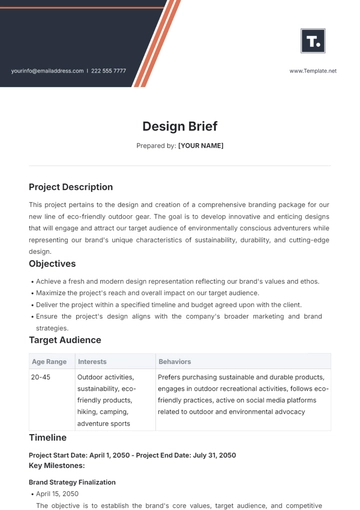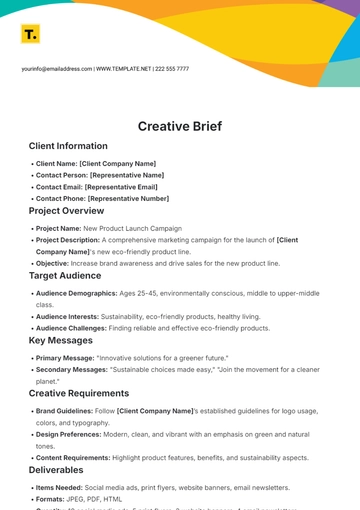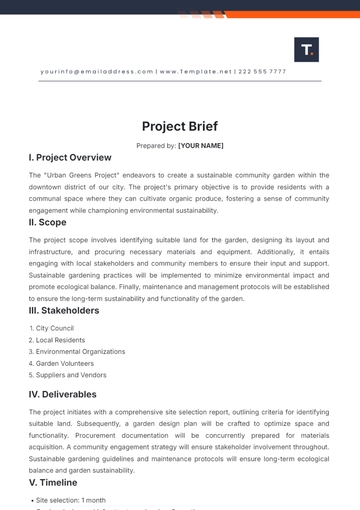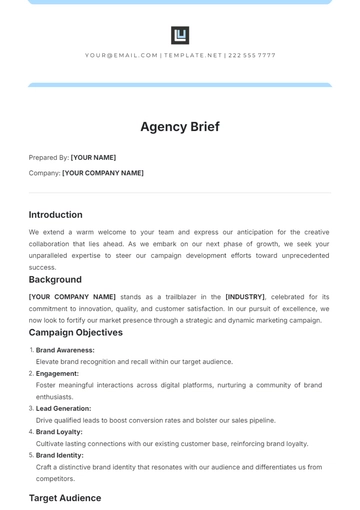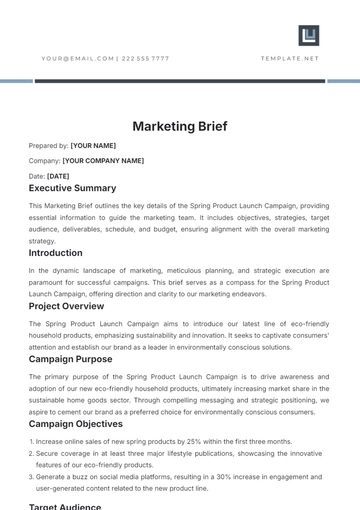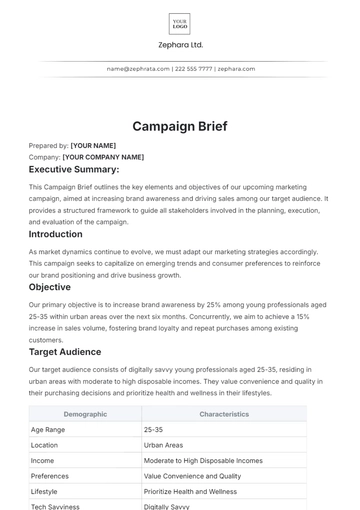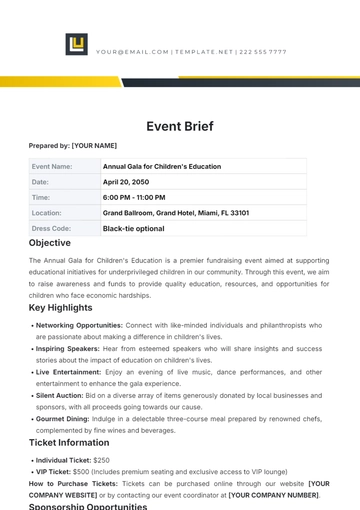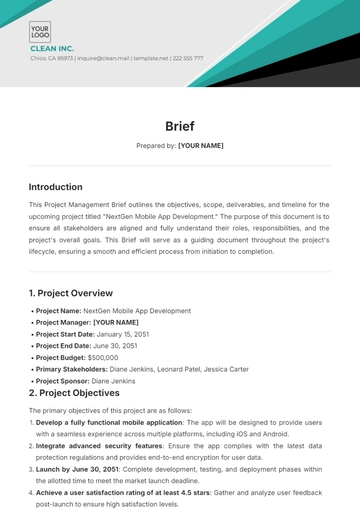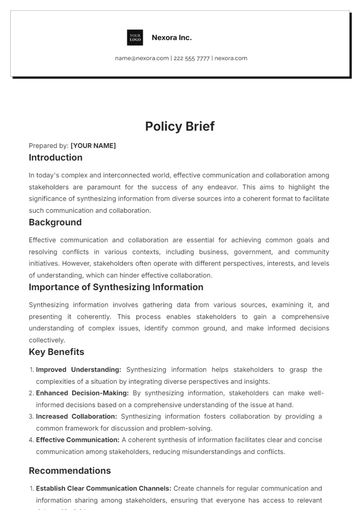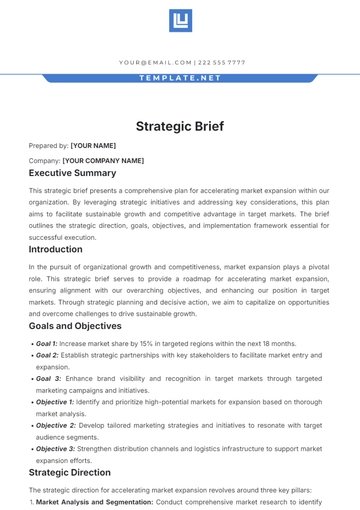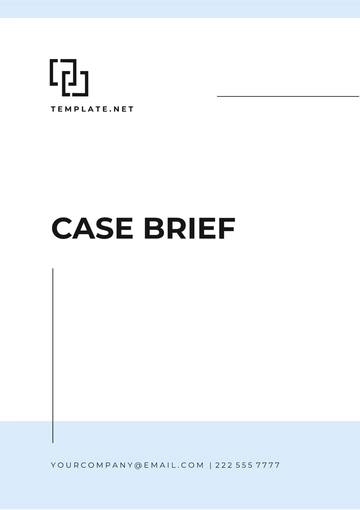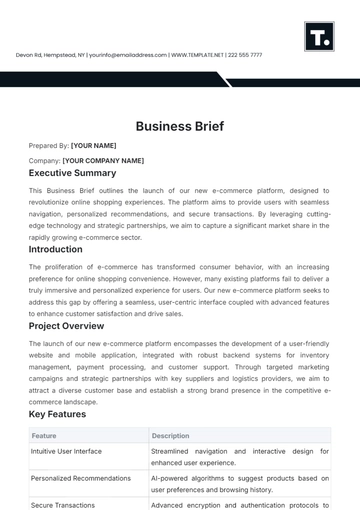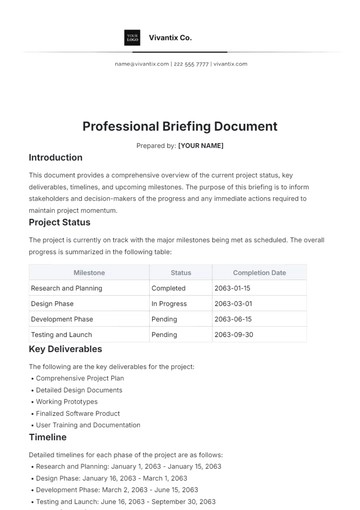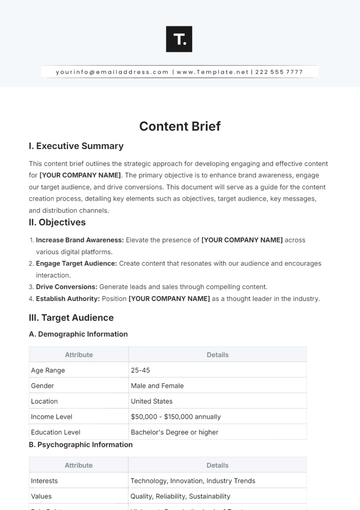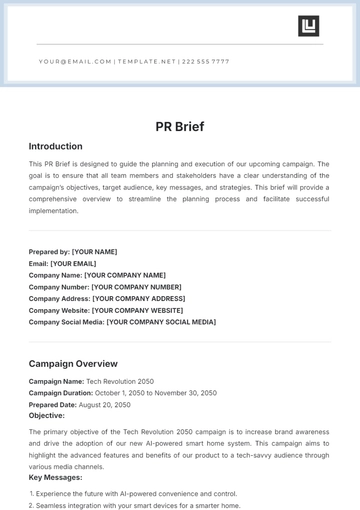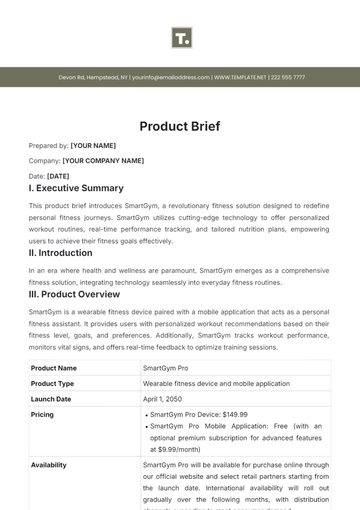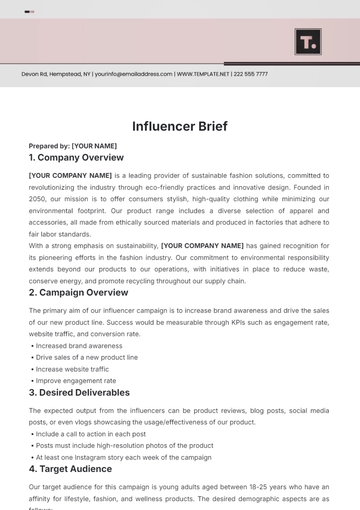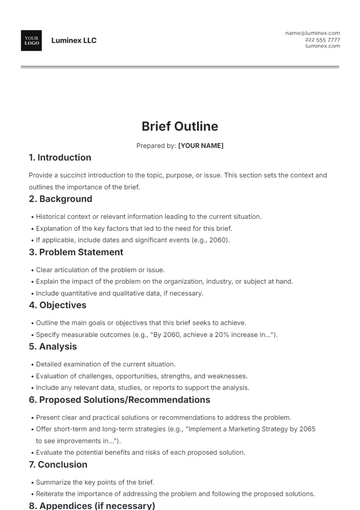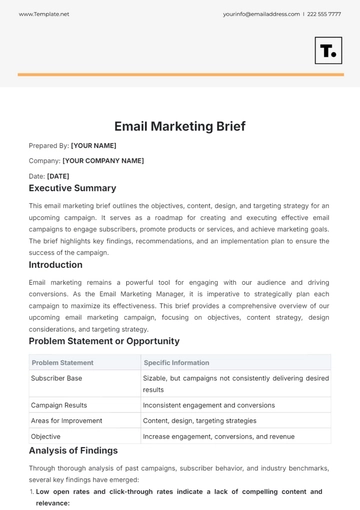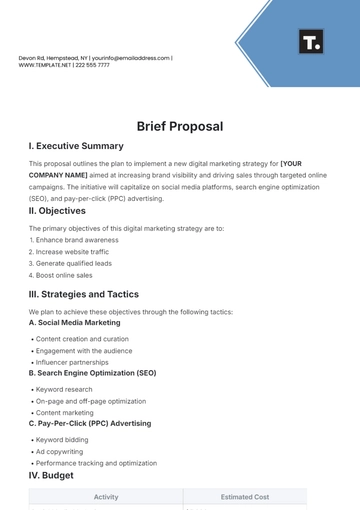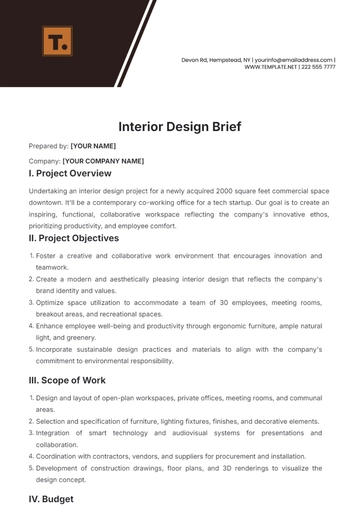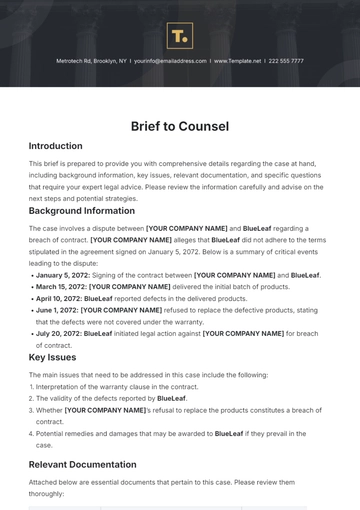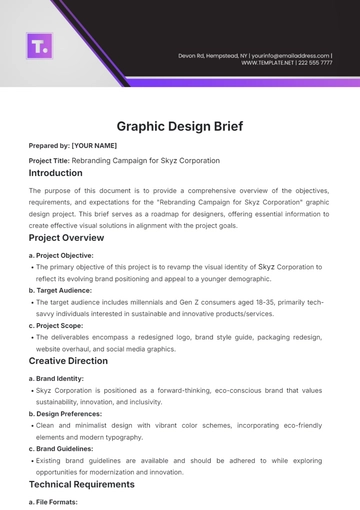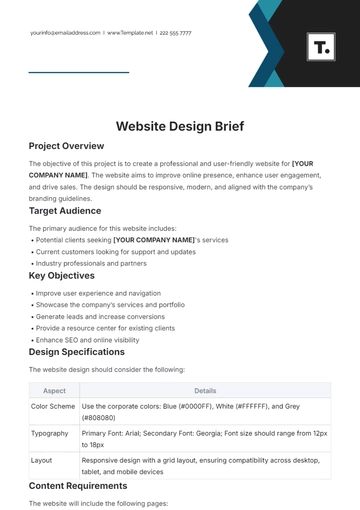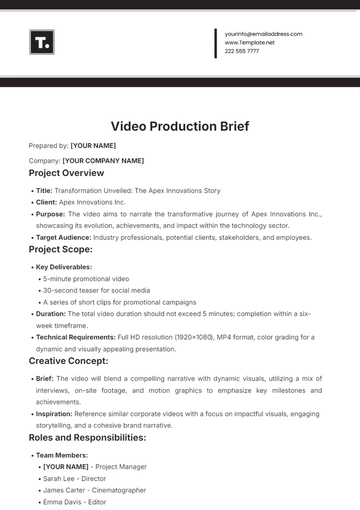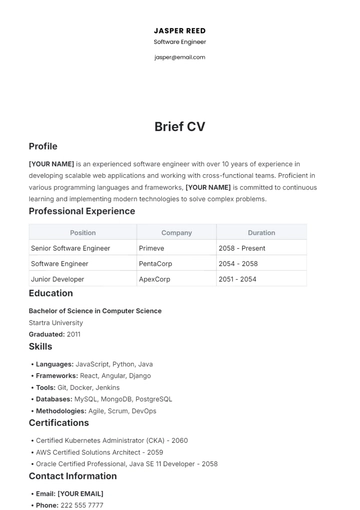Free Intake Brief
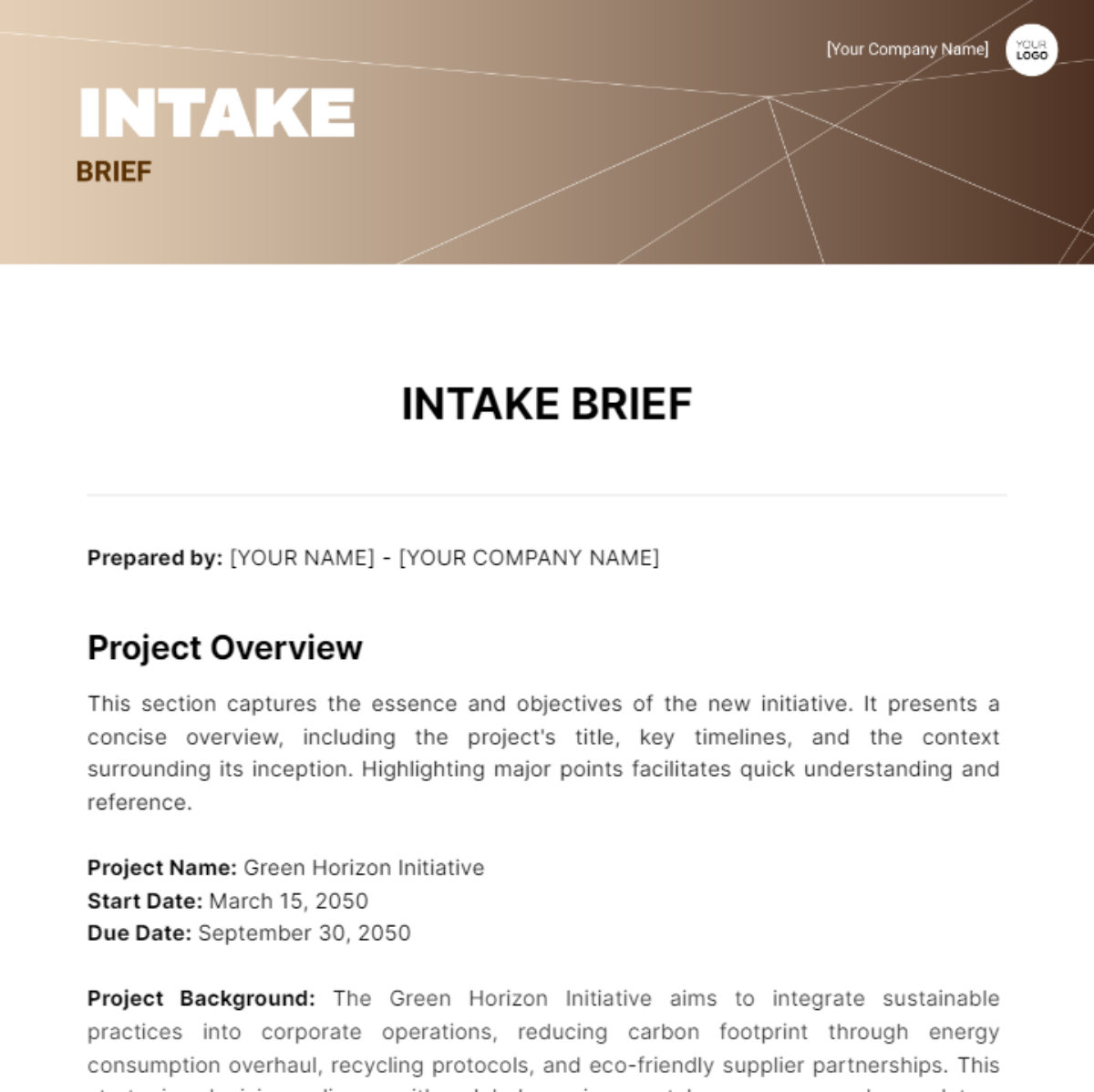
Prepared by: [YOUR NAME] - [YOUR COMPANY NAME]
Project Overview
This section captures the essence and objectives of the new initiative. It presents a concise overview, including the project's title, key timelines, and the context surrounding its inception. Highlighting major points facilitates quick understanding and reference.
Project Name: Green Horizon Initiative
Start Date: March 15, 2050
Due Date: September 30, 2050
Project Background: The Green Horizon Initiative aims to integrate sustainable practices into corporate operations, reducing carbon footprint through energy consumption overhaul, recycling protocols, and eco-friendly supplier partnerships. This strategic decision aligns with global environmental concerns and regulatory requirements, positioning the [YOUR COMPANY NAME] as a leader in corporate environmental responsibility.
Client Requirement
This section enhances the understanding of the project's goals by outlining the precise requirements and expectations from the perspective of the client. Our objective is to meticulously document the client's necessities and translate them into effective project deliverables.
Requirement | Description |
|---|---|
Sustainability Audit | Conduct a comprehensive audit of current operational processes to identify areas where energy consumption and waste production can be minimized. This audit should cover all departments and provide a baseline for measuring future improvements. |
Energy Efficiency Plan | Develop a detailed plan to reduce energy consumption across all facilities. This should include the introduction of energy-efficient lighting, HVAC systems upgrades, and the exploration of renewable energy sources. |
Waste Management Strategy | Implement a company-wide recycling and waste reduction program. This includes setting up recycling stations, reducing single-use plastics in cafeterias, and partnering with waste management services that focus on sustainability. |
Project Objectives and Deliverables
This part of the document is dedicated to outlining the main objectives and primary deliverables of the project. It specifies the project's overarching goals and the expected outcomes, facilitating a unified direction for all project activities.
Objective 1: To significantly reduce the [YOUR COMPANY NAME]'s overall carbon footprint by implementing energy-efficient solutions and sustainable practices across all operations within the next 6 months.
Objective 2: To enhance [YOUR COMPANY NAME]'s brand image and market position by establishing it as a leader in environmental responsibility within the industry.
Deliverable 1: A comprehensive sustainability audit report, complete with baseline metrics, areas of improvement, and actionable recommendations for enhancing energy efficiency and waste management across the [YOUR COMPANY NAME].
Deliverable 2: A detailed sustainability action plan, including a timeline, resource allocation, and step-by-step guidelines for achieving the outlined objectives. This plan will also incorporate a framework for ongoing monitoring, reporting, and compliance with environmental regulations.
Target Audience
This section helps to identify and describe the target audience. It provides insight into the demographics, interests, behaviors, and needs of the people we wish to reach through the project.
Demographic | Description |
|---|---|
Company Employees | All levels of staff within the company, from executive leadership to new hires. This group is essential for implementing and maintaining sustainable practices. |
Suppliers and Partners | Vendors and business partners who provide goods and services to the company. Engaging this group is crucial for ensuring the supply chain's sustainability. |
Customers | End-users of the company's products or services. Their increasing demand for environmentally responsible businesses influences the company's sustainability goals. |
Timeline and Constraints
This section outlines the proposed timeline for the project, detailing each stage's duration and activities, while also acknowledging any known constraints that might impact the project's progression. This ensures all stakeholders are informed of the expected schedule and potential challenges from the beginning.
Timeline:
Stage 1: Initial Assessment and Planning
Duration: 1 Month (March 15, 2050- April 14, 2050)
Description: Conduct a comprehensive sustainability audit to establish a baseline of current practices and identify areas for improvement. This stage also involves setting specific, measurable objectives for the project.
Stage 2: Implementation of Immediate Actions
Duration: 3 Months (April 15, 2050 - July 14, 2050)
Description: Begin with the implementation of strategies that address quick wins identified in the audit, such as energy-efficient lighting upgrades and the introduction of recycling programs across the [YOUR COMPANY NAME].
Constraints:
Constraint 1: Budget Limitations
Description: The project's scope may be influenced by financial constraints, limiting the immediacy with which some of the more costly interventions can be implemented, such as upgrading to energy-efficient machinery or renewable energy systems.
Constraint 2: Operational Disruptions
Description: Implementing new sustainability practices may initially disrupt regular operations. Staff training, changes in suppliers, and the introduction of new processes could temporarily affect productivity and operational efficiency.
- 100% Customizable, free editor
- Access 1 Million+ Templates, photo’s & graphics
- Download or share as a template
- Click and replace photos, graphics, text, backgrounds
- Resize, crop, AI write & more
- Access advanced editor
Streamline your client onboarding process with Template.net's Intake Brief Template. This customizable and editable template, designed for use in our AI Editor Tool, simplifies the collection of client information. Ideal for service providers and agencies, it ensures a seamless intake process. Enhance your client engagement from the start with this vital template.
